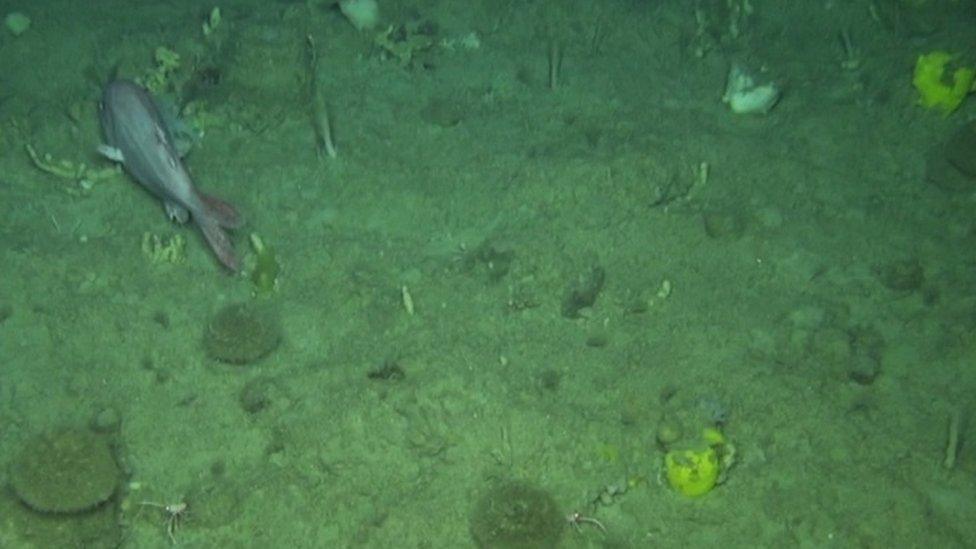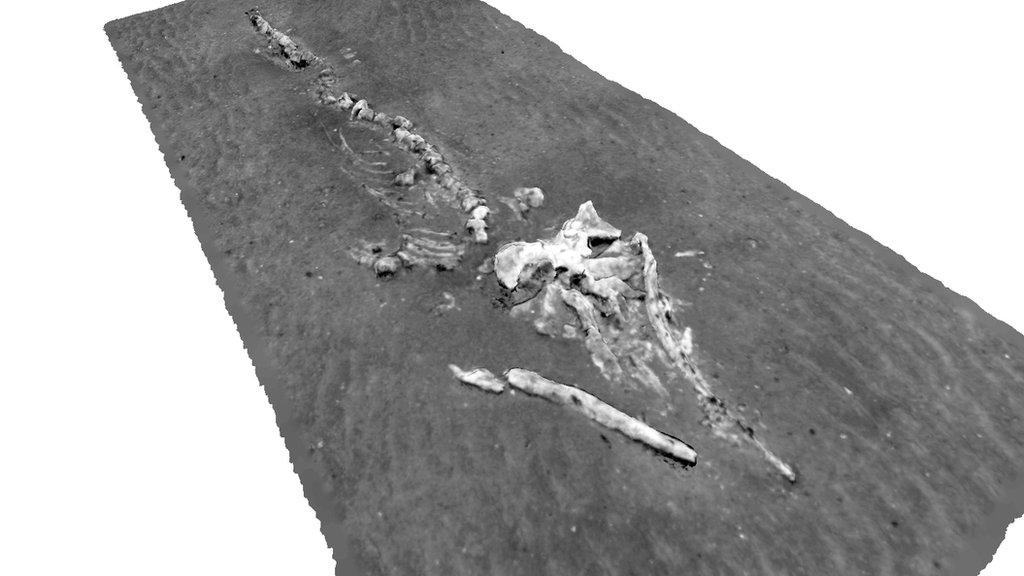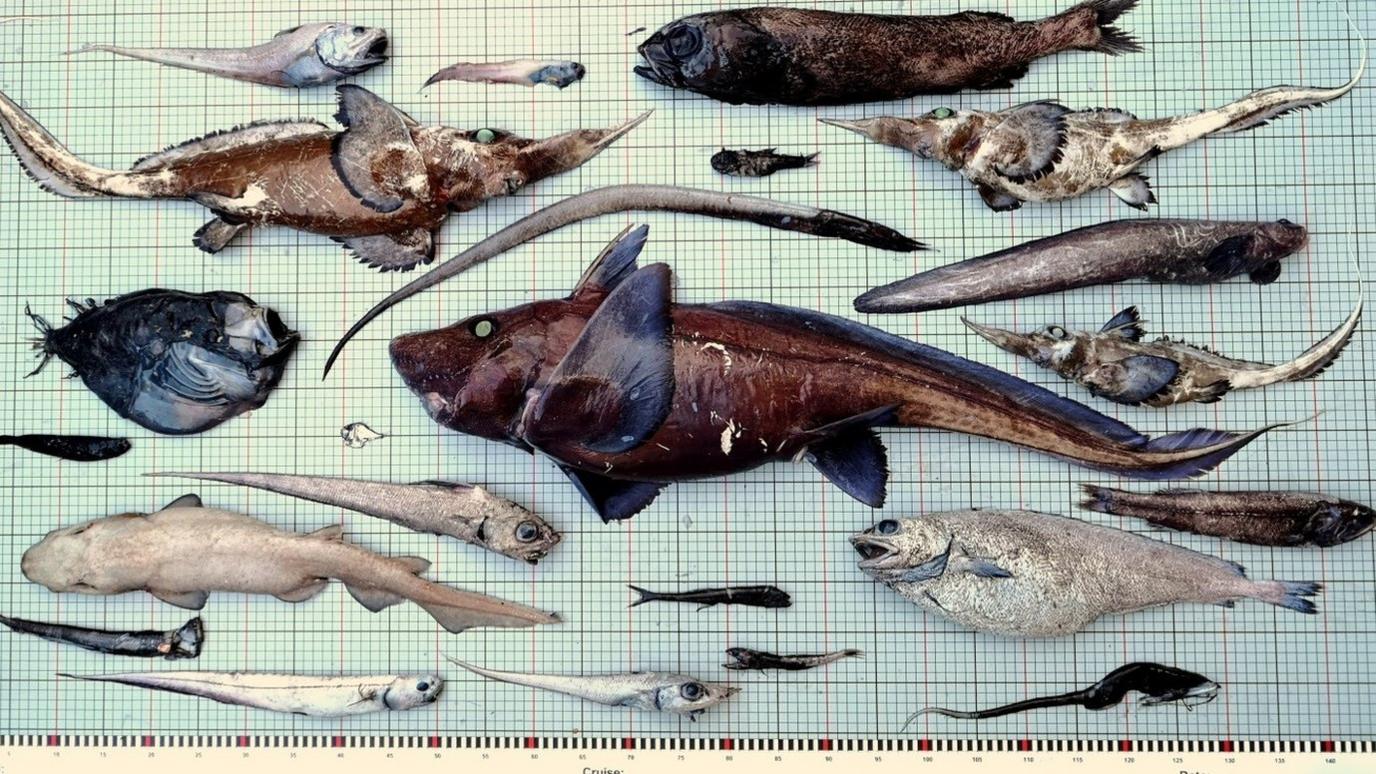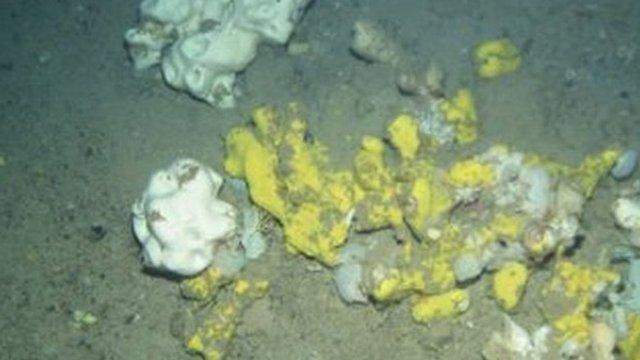Underwater 'Ben Nevis' an important sponges habitat
- Published

An orange roughy fish among sponges on the Rosemary bank Seamount
An extinct underwater volcano off north west Scotland is the site of "important and vulnerable" marine ecosystems, scientists have found.
They described the Rosemary Bank Seamount as having a prominence similar to Britain's tallest peak, Ben Nevis.
New analysis has identified different communities of creatures living at various depths on the seamount.
The scientists said the most "extensive and unusually diverse" of these animals were deep-sea sponges.
Cold water corals and fish such as orange roughy, blue ling, leafscale gulper shark and the Portuguese dogfish have also been recorded.
Four distinct communities of fish were found, with the first on its summit then at different levels on its slopes and the last in a "deep moat" at the base of the extinct volcano.
But the scientists said sponges "dominated" the Rosemary Bank Seamount.
Previous surveys estimated that it provided a habitat to about 88 million sponges.

Geodia atlantica, large white cup-shaped sponges, and small round brown sponges called Craniella longipilis at the seamount
Rising to more than 1,000m (3,281ft) from a flat seabed off the Western Isles, Rosemary Bank is one of only three seamounts in Scottish waters.
It was designated a Marine Protected Area by the Scottish government in 2014.
The newly published research, external, which involved Marine Scotland Science, examined a decade-worth of data gathered from surveys first carried in 2007.
Dr David Stirling, a deep-water ecologist at Marine Scotland Science, said the seamount was full of life.
He said: "It supports a range of important habitats and species, including deep-sea sponge aggregations, cold water corals and fish."
The ecologist said the new research helped to provide evidence in support of policies and regulations aimed at the conservation and management of Scotland's waters.
He added: "This information is essential in providing a reference point against which the impact of future management intervention can be assessed."
- Published19 September 2019

- Published3 September 2018

- Published27 July 2018
